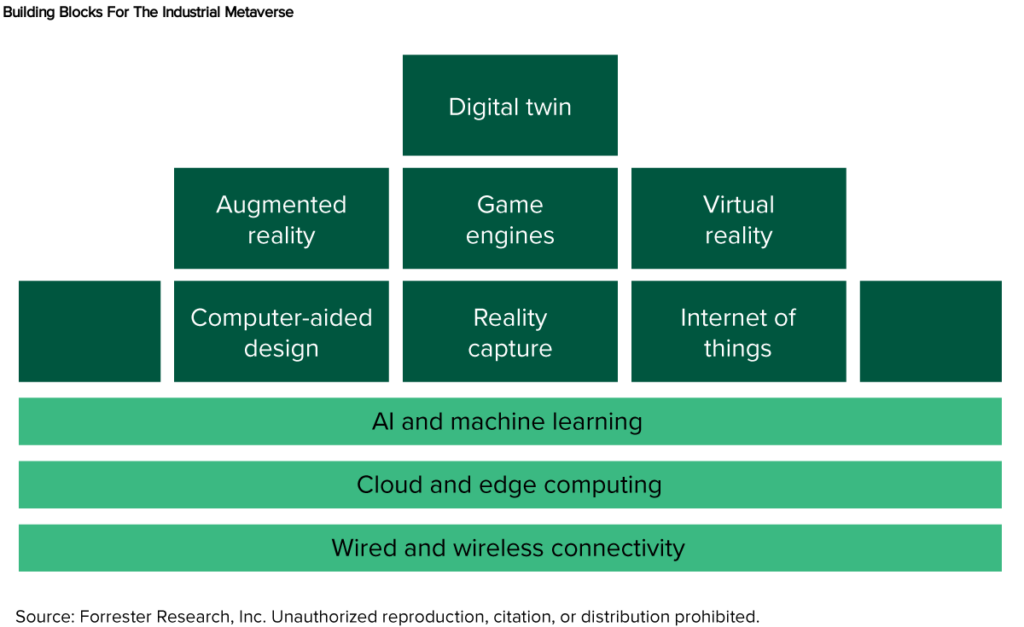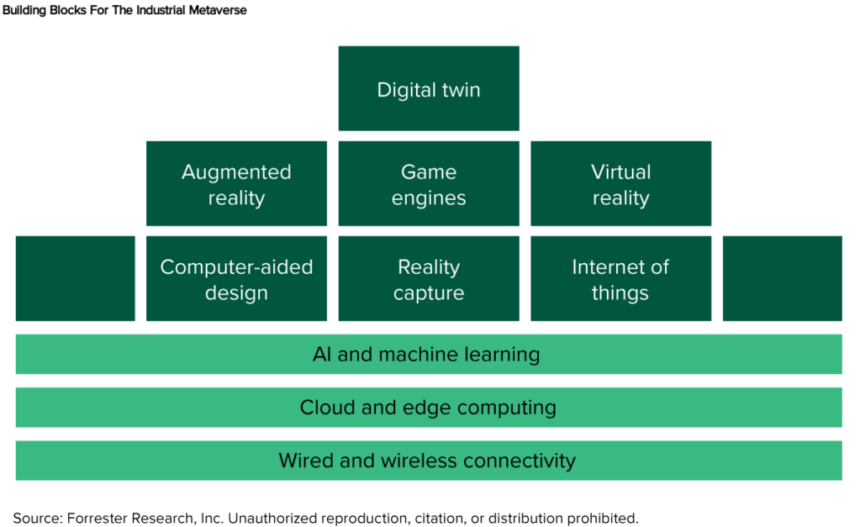Whoever first pitched the idea of calling a broad portfolio of technologies “the industrial metaverse” may regret it. The product managers at many vendors who jumped on the idea almost certainly do. And yet, despite derision from some who hear the term and weary resignation from most others, there’s still value in a simple label for this set of complementary technologies. And, sadly, no one’s come up with anything much better yet.

Forrester describes the metaverse as the 3D experience layer of the internet. In our new report, The Industrial Metaverse: Ignore The Hype And Focus On Technologies That Make A Difference, we take a deeper dive into this specialisation of the metaverse that’s all about connecting the digital and the real worlds for asset-intensive industries like manufacturing. Here, precision, accuracy, and fidelity matter far more than the prettiness of a picture on screen: If a digital model suggests a door is 2 metres high, or that a motor is rotating at 42 revolutions per second, it had better be right.
Technologies like IoT, augmented reality (AR), reality capture, or the digital twin have been around for a while. They deliver value on their own, but they deliver more value together: AR can be a good way to get up-to-date IoT data to a service technician out in the field, for example. For years, most good use cases only paired a couple of these technologies: It’s fine to say “IoT and AR” or “reality capture and digital twin.” But as the use cases get more complex, the need for a label has grown: Introducing a new “IoT and AR and digital twin and reality capture and cloud” solution quickly gets depressing.
Before the metaverse really exploded onto the scene in 2021, the hunt was already on for a good label. Spatial computing, which Apple now likes to use when describing its new headset, was one frontrunner. With a background in geographic information systems (GIS), that term always made Paul a little uncomfortable: Spatial computing is what your GIS is for! The term digital twin, which Forrester carefully defines as “a digital representation of a physical thing’s data, state, relationships, and behaviour,” also saw some scope creep: If your digital twin is fed by IoT data and visualized in AR, for example, surely it’s not too terrible to just call the sum of these parts the digital twin? In one project, inside one company, maybe. But as a way to describe a broader set of overlapping trends, technologies, and use cases, it’s unmanageable. And that’s before you further complicate matters by throwing intra- and intercompany collaboration into the mix.
Our report highlights plenty of places where this group of technologies combine to do interesting and useful things, and it also describes the steps being taken to make everything work together far more consistently than most manage today. But, if someone comes up with any better name for all this, these two analysts will not be displeased.
As always, if you have your own perspectives to share, please schedule a briefing and tell us all about them. If you’re a Forrester client and want to discuss (or challenge) our thinking on this topic, please schedule an inquiry.








